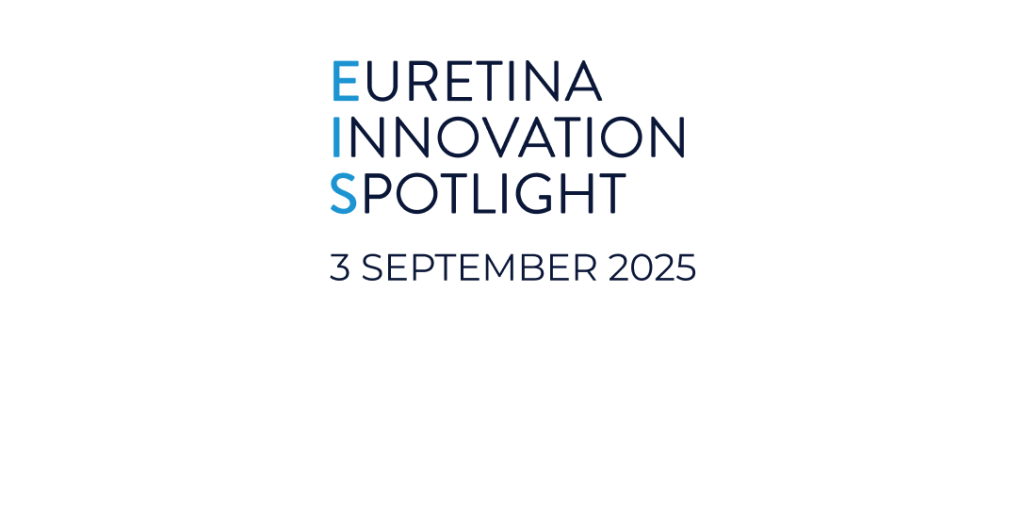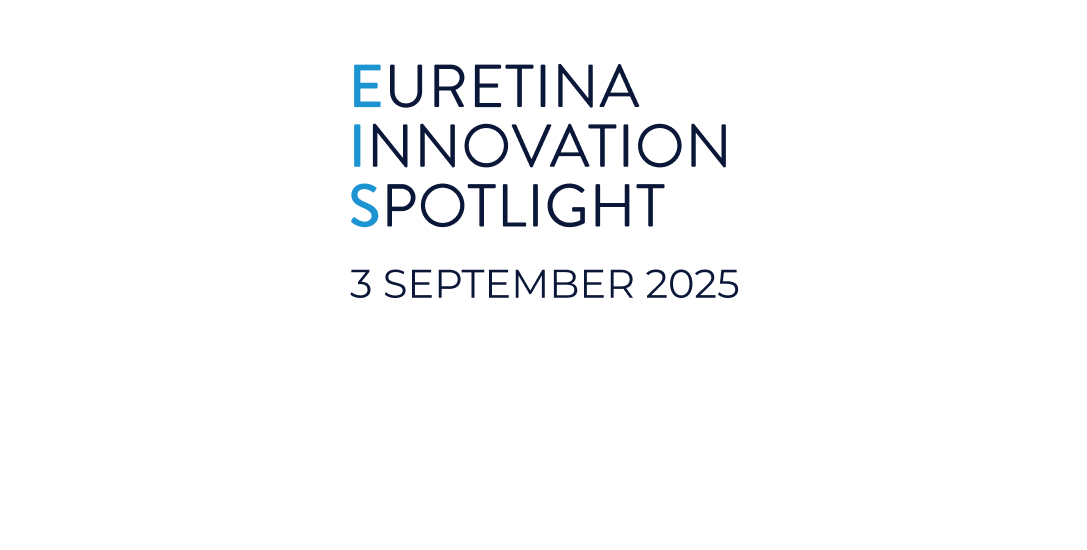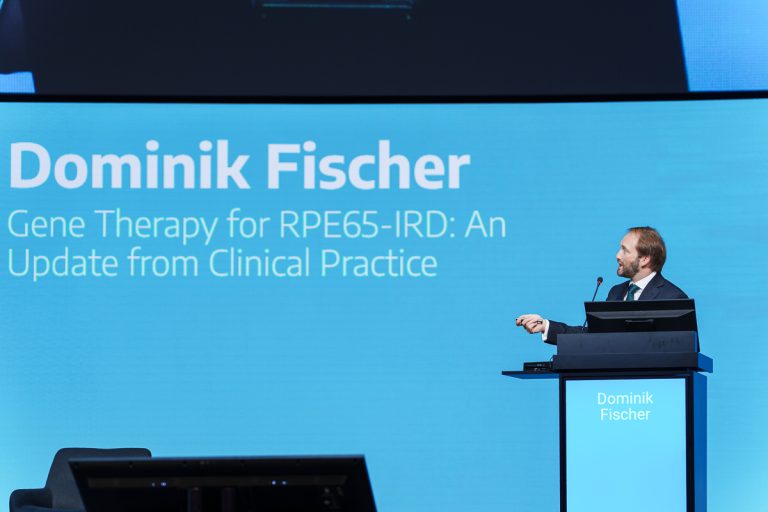In a programme that featured eight speakers, registrants attending the Euretina Session on inherited retinal disorders (IRDs) heard rapid-fire presentations on the status of innovative therapies for these diseases.
The session began with a talk providing practical considerations for gene therapy for RPE65-IRD. Given by Dr. Dominik Fischer (United Kingdom), the key learnings related to patient selection, managing patient expectations, performing the surgery, and being aware of side effects and their management. After discussing these topics, Dr. Fischer provided a list of best practices that included recommendations to use as little virus as possible, but as much as needed to achieve the desired therapeutic effect, to identify and treat gene therapy-associated uveitis (GTAU) early and effectively, and to do lavage to remove excess virus from the vitreous cavity.

Dr. Robert Maclaren (United Kingdom) discussed gene therapy for X-linked retinitis pigmentosa. After presenting a video to demonstrate his injective technique, Dr. Maclaren reported results available so far in the XIRIUS trial of AAV8.coRPGR, describing them as “nothing short of spectacular.”
He said, “The anatomical findings showed a reversal of photoreceptor degeneration, which was an unexpected but hugely positive sign and is more objective than functional tests. In addition, there is no evidence yet that mutant RPGR protein adversely affects the positive response of RPGR gene therapy.”
Dr. Jasmina Kapetanovic (UK) reviewed gene therapy trials for choroideremia. She noted that the phase 3 STAR trial of AAV2.CAG.REP1 did not meet its primary endpoints, although positive trends were observed, and the trial led to the design of REGENERATE, a phase 2 study in patients with less advanced disease. Dr. Kapetanovic reported that due to slow degeneration in this disease, no difference was seen after 24 months in the REGENERATE trial in change from baseline BCVA comparing treated and control eyes. There is a need to look at longer term data, and the trial is ongoing, she said.
Dr. Bart Leroy (Belgium) discussed antisense oligonucleotide and dual vector therapies for IRDs. These technologies are used for delivery of large genes that exceed the capacity of adeno-associated viral (AAV) vectors. Dr. Leroy described various platforms that are being evaluated in this very recent field.
Dr. Mark Pennesi (USA) gave an update on the BRILLIANCE gene editing trial using Edit-101for CEP290-related retinopathy. Although the study was stopped, patient follow-up is continuing, and Dr. Pennesi presented data collected through 4 years. His conclusions were that the long-term data shows overall safety and continued efficacy. Eleven out of 14 patients showed improvement in at least one outcome metric, and 6 of the 14 patients had improvement in two metrics. The safety review showed that Edit-101 was generally well tolerated and associated with some cases of mild inflammation.
Gene agnostic therapies for IRDs are of interest because of the clinical and genetic heterogeneity of these diseases. Discussing this topic, Dr. Isabelle Audo (France) said that such treatments are being developed for two scenarios – to support photoreceptors that are still present (neuroprotection) and to restore vision in advanced cases where there is no longer photoreceptor support. She described several gene-independent approaches being developed that show promise.
As background for a talk about cell therapies for IRDs and age-related macular degeneration, Dr. Lyndon da Cruz (UK) noted that cell therapies address the fact that neural cells do not regenerate in humans. While the concept of replacing missing cells is very concrete, there are challenges to solve, including deciding on the cell source and differentiation stage, how to implant it, and when in the disease history to deliver the treatment.
Dr. da Cruz discussed each of these issues and ended with a summary of what has been achieved so far. He noted that since 2012, over 100 patients have received some form of published stem cell therapy. There are some early signals of efficacy, and there have not been any major safety signals in terms of tumour or immune reactions. However, there has been some significant toxicity in terms of delivery.
Ending the session, Dr. Kanmin Xue (UK) reviewed GTAU. He observed that it is becoming a more relevant topic considering that with several clinical trials having advanced into later stages of product development, gene therapy may be becoming more common in the not-too-distant future.
Dr. Xue discussed the ocular immune response to AAV vectors, the impact of delivery routes (subretinal, intravitreal, suprachoroidal) on GTAU incidence, and strategies for individual risk stratification.
He said, “The central message is that the future success and expansion of retinal gene therapy depend on a multifaceted approach combining tailored immunomodulation, improved vector designs for immune evasion, and refined surgical techniques to maximise safety and efficacy.”
This session will be available for all registered attendees on demand.









